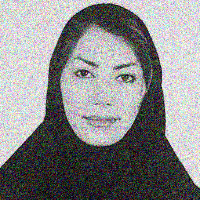Semantic Analysis of Persian Typography in the Relationship between Signifier & Signified
Author(s):
Article Type:
Research/Original Article (دارای رتبه معتبر)
Abstract:
Semantics is a scientific study of coherent structure for analyzing and understanding the meaning of texts and discourses which could be achieved through the study of signifiers such as slabs. This science is always looking for the hidden structural relations of meaning production in signifiers. In the meantime, artistic writing systems such as Persian typography might be considered as a text possessing visual language which in its communicative nature, is always interacting with slabs and requires analysis and interpretation. A signifier is a textual or spoken sign with the concept derived from it called 'signified'. In analyzing typography, it doesn't suffice to focus on image as a non-changing signifier but it is the study and decoding of the relationship between this signifier and others in dimensions far beyond the conventional visual aspects, particularly in a deep conceptual dimension and the resulting signified that is of significance. In other words, in the process of its own symbolic transformation and using a language based on artistic visual rules, the Persian typography possess a combination of signifiers that reveals different types of signified optionally and based on their position. On the other hand, understanding the meaning in the relationship between the signifier and the signified depending on paradigmatic and syntagmatic rules, is another key issue in Persian typography analysis. The terms paradigmatic and syntagmatic refers to achieving similarity in the display of signifiers, which leads to the emergence of different types of relationship between them and brings about novel sets of signified under the auspices of various visual methods. This research is based on the idea that, the method of presenting signs and the relations between them in works of art have so far been almost based on an objective and formal reading, limited to visual expression and graphic geometry; consequently, the elaboration upon revealing their profound and influencing conceptual aspects in the new process of artistic analysis and reading have been neglected. Not only these aspects have a firm interactive relationship with abstract concepts, but are also of high value due to their close relation to the roots and fundamental originality of philosophical thoughts. Therefore, it seems that the possibility of semantic analysis of typographic works and related meanings depends on the mutual recognition of the relation between the signifier and signified and their classification, which gives the resulting signification a particular value as the ultimate effect the way that it creates a one unique whole emerging out of the tangible relations of its components. Therefore, the paper at than is of importance due to the need for proper understanding of the meaning in Persian typographical works which is dependent on the full recognition of written signifiers and their relationship with each other. In order to reach the desired signified, making a proper classification in the relationship between the signifier and signified deems necessary. However, the significance resulting from this coordinated relationship becomes very significant in different paradigmatic and syntagmatic approaches. The purpose of the present study is the semantic analysis of Persian typography in the relationship between the signifier and the signified using a descriptive-analytical method of research made through desk study of library resources and case studies. It also seeks to answer the question of how the relationship between the signifier and signified in Persian typography can be categorized and using which visual method the meaning can be achieved from the difference in paradigmatic and syntagmatic approaches towards the signified. The results indicated that the Persian typography possesses such visual capabilities that within the framework of its mission in media, one can derive common or distinct signified based on the arrangement of letters as image signifiers and their readings in the form of written signifier. The realization of this is possible through establishing a proper classification between the signifier and signified in terms of examining the similarities and differences between them which leads the audience to understand its meaning when dealing with it.
Keywords:
Language:
Persian
Published:
Journal of Theoretical principles of Visual Arts, Volume:4 Issue: 1, 2019
Pages:
117 to 129
magiran.com/p2021838
دانلود و مطالعه متن این مقاله با یکی از روشهای زیر امکان پذیر است:
اشتراک شخصی
با عضویت و پرداخت آنلاین حق اشتراک یکساله به مبلغ 1,390,000ريال میتوانید 70 عنوان مطلب دانلود کنید!
اشتراک سازمانی
به کتابخانه دانشگاه یا محل کار خود پیشنهاد کنید تا اشتراک سازمانی این پایگاه را برای دسترسی نامحدود همه کاربران به متن مطالب تهیه نمایند!
توجه!
- حق عضویت دریافتی صرف حمایت از نشریات عضو و نگهداری، تکمیل و توسعه مگیران میشود.
- پرداخت حق اشتراک و دانلود مقالات اجازه بازنشر آن در سایر رسانههای چاپی و دیجیتال را به کاربر نمیدهد.
دسترسی سراسری کاربران دانشگاه پیام نور!
اعضای هیئت علمی و دانشجویان دانشگاه پیام نور در سراسر کشور، در صورت ثبت نام با ایمیل دانشگاهی، تا پایان فروردین ماه 1403 به مقالات سایت دسترسی خواهند داشت!
In order to view content subscription is required
Personal subscription
Subscribe magiran.com for 70 € euros via PayPal and download 70 articles during a year.
Organization subscription
Please contact us to subscribe your university or library for unlimited access!



